President's Message - September 2018
A Household Name
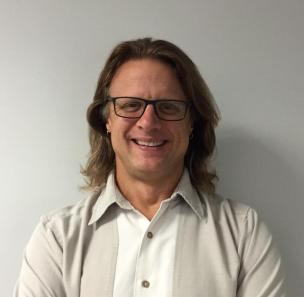
DAVID PETRO
david.petro@oame.on.ca
As the incoming President, I'm supposed to have some sort of vision. Part of my vision is to continue the quest to make OAME a "household name." I would like pre-service teachers to know where they can go for support. I want current teachers to know that they can find quality professional development at our Annual Conference (we topped 2000 participants this year-the highest ever) or at our Leadership Conference (with Dan Meyer, Cathy Fosnot, and Graham Fletcher this November), but also in their local chapters (we have 15 to choose from across the province). I want administrators to know they can count on us to help their teachers reach their students, and I want our current government to know they can rely on us to help guide them to smart decisions about math education.
When I started going to provincial meetings as the chapter rep, it wasn't long before I started to meet people from all over the province, and it wasn't long until I was invited to speak. In fact, at one of my first meetings, Jaqueline Hill (who would eventually be President in 2007 and is now the NCTM representative) cornered me and suggested I submit a proposal for OAME 2003. Me? What would I talk about? Was there something I had to say that maybe no one else would? As it turns out, even 15 years ago, I was keenly interested in technology and online learning. Though you can see by my sparse description, I was definitely a newbie when it came to presenting at OAME.
But 50 people still came to hear what I had to say. I learned from all the mistakes I made and got a little more refined for presenting at OAME 2004. I was still talking about online learning, but now specifically with Geometer's Sketchpad™ (GSP). I'm not sure if I was ahead of my time or whether that's just how good GSP was and still is (even now, I'm still making online websketches with GSP). Since then, I have only missed presenting at one OAME conference and have continued to talk about how online tools can benefit both students and teachers.
So it makes sense that another part of my vision as President is to somehow exploit the online environment to enhance mathematics in Ontario, whether that be in classrooms with students learning via online tools, or outside of the classroom, helping teachers personalize their own professional development, I think that OAME can be there to help figure out the best way to do that. It's 2018, and we are literally one-sixth the way into the 21st century, yet people still talk about "21st-century learning" as if it's something new.
That thought led to the theme of this year's OAME Leadership Conference: Learning in the 21st Century. Our keynote speakers were chosen because they are currently exploiting online tools for the benefit of math teachers, leaders, and students. Dan Meyer started by giving away high-quality resources that were engaging for students and that caused them (and their teachers) to think. He eventually built a community of thousands of teachers who constantly talk about math in a deep way. Cathy Fosnot is well known for her work drawing out student thinking and numeracy skills, but now has developed tools to help deliver professional development to teachers remotely. Graham Fletcher (formerly from Ontario) has embraced the online community that organically grew out of Twitter, called the Math Twitter Blog-o-Sphere (#MTBoS), and used it to shape his own teaching. It is also a vehicle for all the great resources he develops. There is a lot of talk about too much Internet being a bad thing, but it is a marvelous tool that we have, for free, that can help us become better teachers.
Don't get me wrong. Despite this talk of the online environment being so great, I can't forget to speak of the personal connections I have made through the OAME in the last 15 years. For example, our current Webmaster and technology guru, Greg Clarke, and I started attending the OAME Board of Directors meetings at the same time. Both of us were pretty green back then, and both of us still talk about things we want to get done. (Maybe we'll get to that podcast yet, Greg.) I could fill an entire Gazette with the connections I have made over the years, but let me focus on just one weekend in 2004. NWOAME was having a miniconference, and Bill Otto (current Vice-President) had invited me to speak. I had only recently met Bill, but we always had great conversations about teaching senior math courses. Now 14 years later, we can still have those conversations, but more importantly, in my current role, I know I can rely on him as a savant about the OAME constitution.
While there, in 2004, I presented alongside others that I was meeting for the first time. There was Anne and Rod Yeager. They have been involved with OAME and the Ontario Ministry of Education for many years since then. (Anne is currently a Director of OAME and an associate editor of the Gazette.) But more than anything, over the years, they opened my eyes to the fact that teaching Applied students were not a "punishment," but a gift. Also presenting that weekend in 2004 were Fred Ferneyhough and Mary Bourassa. I quickly learned that he was the guy to go to if I needed any TI-84 knowledge, and now he is part of the dynamic duo (along with Lynda Ferneyhough), who make up our Executive Directors (and literally run the administrative side of OAME). Mary, of course, writes the Technology Corner column in the Gazette, but shares many resources online. You can see her day-by-day reports about her Grades 9 and 10 classes on her blog, Making Math Meaningful, as well as the work she did starting the site, wodb.ca, based on Christopher Danielson's book Which One Doesn't Belong?. As I look back now, I find it shocking that all those years ago, I was presenting in Thunder Bay with teachers who would have so much impact (and continue to have impact) on teaching and learning in Ontario.
So that's where I begin, hoping to make more people know what OAME is and what it can do for them, while exploiting online tools for teaching and learning. I hope you will stay with me for the journey, can learn something along the way, and make those connections with teachers from all over the province to "Make Math Great Again" (I realize it has always been great, but as the new President, I couldn't resist).
Previous Message:
Reflecting
Next Message:
What are the "basics" in math?

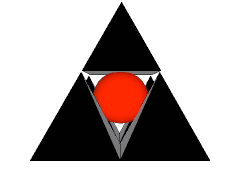







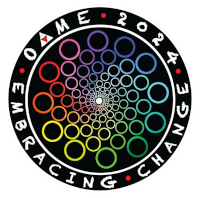
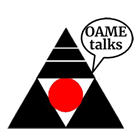
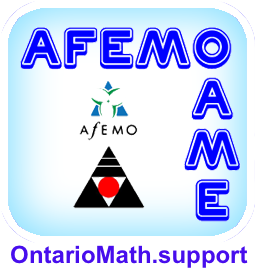
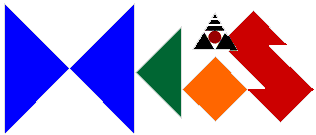



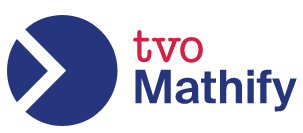

 Like us on FaceBook
Like us on FaceBook